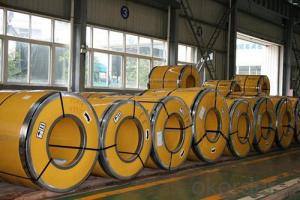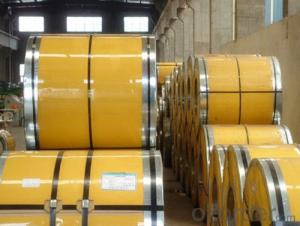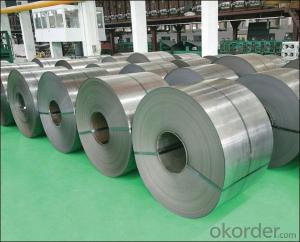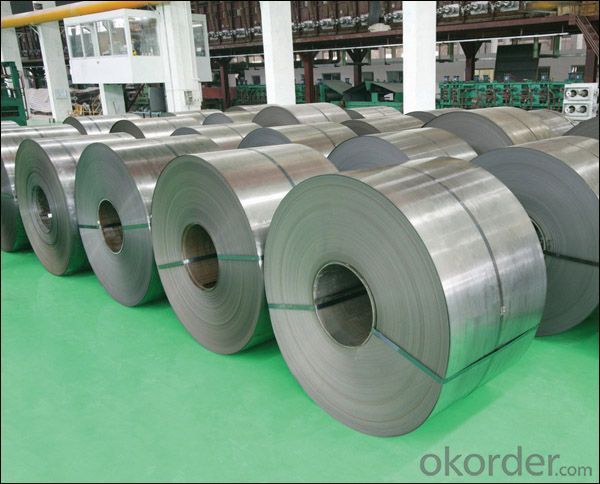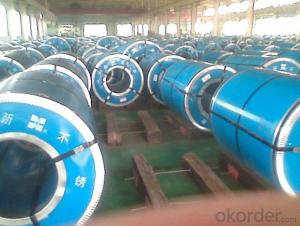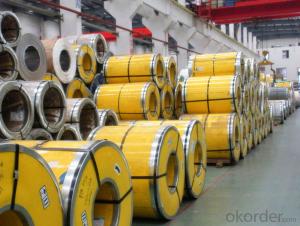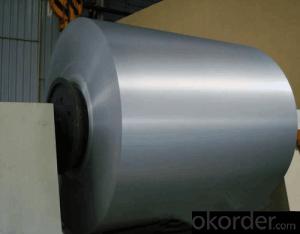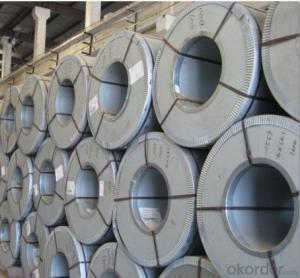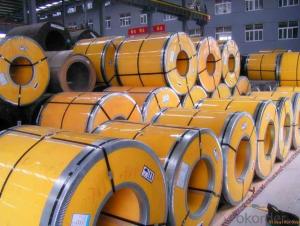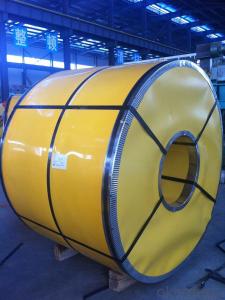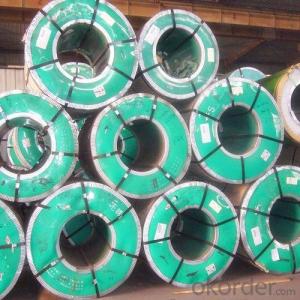Hot Rolled Stailess Steel Coil 300 Serious
- Loading Port:
- Tianjin
- Payment Terms:
- TT OR LC
- Min Order Qty:
- 25 m.t.
- Supply Capability:
- 100000 m.t./month
OKorder Service Pledge
OKorder Financial Service
You Might Also Like
Hot Rolled Stailess Steel Coil 300 Serious
1.Structure of Hot Rolled Stailess Steel Coil 300 Serious
Hot Rolled Stailess Steel Coil 300 Serious is one of the raw material of the cold rolled stainless steel strip, which can be used directly in many places. Stainless Steel (Stainless Steel) is short for acid-proof Stainless Steel, resistant to weak corrosive medium such as air, steam, water, or with a Stainless Steel grade.
2.Main Features of Hot Rolled Stailess Steel Coil 300 Serious
1) weldability: The purpose of the different requirement for welding performance are different.1 Kind of tableware generally do not require the performance of welding, even including some pot class enterprise. But the vast majority of products all need raw materials welding performance is good, like the 2 kinds of tableware, thermos flask, steel pipes, water heaters, water dispensers, etc.
2) Corrosion resistance The vast majority of stainless steel products for corrosion resistant performance is good, like a, 2 kinds of tableware, kitchen utensils and appliances, water heaters, water dispensers, etc., some foreign businessmen on corrosion resistance of products also do experiment: in NACL aqueous solution heated to boiling, after a period of time the best solution, wash and drying, weight loss, to determine the degree of corrosion (note: the product polishing, because of the sand cloth or sandpaper containing Fe, will cause the test surface rust spots)
3) Polishing performance In today's society stainless steel products in production after polishing the process commonly, when only a small number of products such as water heaters, water dispenser tank don't need polishing. So this will require materials polishing performance is very good. The factors influencing polishing performance mainly include the following: 1) raw material surface defects. Such as scratch, pitting, pickling, etc. (2) raw material problem. Hardness is too low, easy when polishing cast light (BQ), and the hardness is too low, the surface easily when deep drawing appear orange peel phenomenon, which affects the BQ. Relatively high hardness of BQ sex is good. (3) after deep drawing products, great deformation area surface will be a small black spots and RIDGING, thus affecting the BQ.
4) Heat resistant performance Heat resistant performance refers to the high temperature stainless steel can still maintain its excellent physical and mechanical properties. Carbon: the influence of carbon in austenitic stainless steel is formed strong and steady. Set the austenitic austenitic area and expand elements. Carbon formation of austenite is about 30 times that of the nickel, the ability of carbon is a kind of gap elements, through the solid solution strengthening can significantly increase the strength of the austenitic stainless steel. Carbon austenitic stainless steel can be improved in high concentration chloride (e.g., 42% MgCl2 boiling solution) in the performance of the resistance to stress corrosion. But, in the austenitic stainless steel, carbon is often seen as the harmful elements, this is mainly due to the corrosion of stainless steel used in some conditions, such as welding or heating by 450 ~ 850 ℃), carbon steel with chromium in forming high chromium Cr23C6 type carbon compounds which can lead to local chromium depletion, make steel corrosion resistance especially resistant to intergranular corrosion performance degradation. So. Since the 60 s of the development of new cr-ni austenitic stainless steel is mostly carbon content less than 0.03% or 0.02% of the ultra-low carbon type
5) Corrosion resistance When the atomic number of no less than 12.5% chromium content in steel, can make the steel electrode potential mutations, the negative potential to the positive electrode potential. To prevent electrochemical corrosion.
3. Hot Rolled Stailess Steel Coil 300 Serious Images
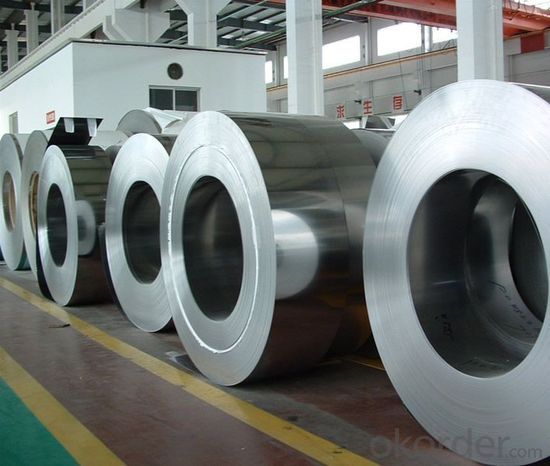
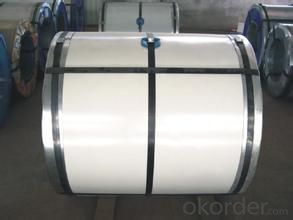
4. Hot Rolled Stailess Steel Coil 300 Serious Specification
The word "stainless steel" is not merely refers to a pure stainless steel, but said more than one hundred kinds of stainless steel industry, the development of each stainless steel has good performance in their specific applications. The key to the success of the first is to make clear purpose, and then determine the correct material. Related to architectural construction applications usually only six types of steel. They contain 17 ~ 22% chromium, good steel contains nickel. Add molybdenum can further improve the atmospheric corrosion resistance, especially containing chloride atmospheric corrosion resistance. Stainless steel often according to the state of organization can be divided into: martensite steel, ferritic steel, austenitic steel, austenitic (two-phase) - ferrite stainless steel and precipitation hardening stainless steel, etc. In addition, according to ingredients can be divided into: chromium stainless steel, chromium nickel stainless steel and chromium manganese nitrogen stainless steel, etc.
1) Ferritic stainless steel Chromium containing 15% ~ 30%. Its corrosion resistance, toughness and weldability with chromium content increases with the increase of chloride stress corrosion resistance is superior to other types of stainless steel, fall into this category of Crl7, Cr17Mo2Ti, Cr25, Cr25Mo3Ti, Cr28, etc. Ferritic stainless steel because of the high chromium content, corrosion resistance and oxidation resistance are relatively good, but the mechanical properties and process performance is poorer, more used to stress less acid structure and steel used as antioxidant. This kind of steel to withstand atmosphere, nitric acid and corrosion of the brine solution, and has good high temperature oxidation resistance, low thermal expansion coefficient, etc, used in nitric acid and food factory equipment, also can make work under high temperature parts, such as gas turbine parts, etc.
2) Austenitic stainless steel The title Chromium is more than 18%, still contain about 8% of the nickel and small amounts of molybdenum, titanium, nitrogen and other elements. Good comprehensive performance, corrosion resistant to a variety of media. Number of austenitic stainless steel is commonly used one cr18ni9, 0 cr19ni9, etc. In the Wc < 0.08% 0 cr19ni9 steel, steel grade is marked as "0". This class contains large amounts of Ni and Cr in steel, make steel in austenitic state at room temperature. This kind of steel has good plasticity and toughness, weldability and corrosion resistance and non-magnetic or weak magnetic, the corrosion resistance in oxidizing and reducing medium are good, used to make acid equipment, such as corrosion resistant containers and equipment lining, pipelines, nitric acid resistant equipment parts, etc., also can be used as the main body of watches and clocks jewelry stainless steel material. Austenitic stainless steel with solid solution treatment, the steel heating to 1050 ~ 1150 ℃, then water-cooled or air-cooled, for single-phase austenitic organization.
3) Austenitic, ferritic duplex stainless steel The advantages of both austenitic and ferritic stainless steel, and has the superplasticity. Austenite and ferrite The title Each accounts for about half of the stainless steel. In the case of contain low C, Cr content was 18% ~ 18%, Ni content at 3% ~ 3%. Some steel containing Mo, Cu, Si, Nb, Ti, N and other alloying elements. This kind of steel both austenite and ferrite stainless steel, the characteristics of compared with ferrite, plasticity and toughness is higher, no room temperature brittleness, intergranular corrosion resistance and welding performance were significantly increased, while maintaining a ferritic stainless steel of 475 ℃ brittleness and high thermal conductivity, has the characteristics of superplasticity. Compared with austenitic stainless steel, high strength and resistance to intergranular corrosion and resistance to chloride stress corrosion is improved obviously. Duplex stainless steel has excellent resistance to pitting corrosion performance, is also a kind of nickel and stainless steel.
4) Precipitation hardening stainless steel For austenitic or martensite structure matrix, and the number of precipitation hardening stainless steel commonly used such as 04 cr13ni8mo2al. It can pass the precipitation hardening (also known as the age hardening) dealing with the hard (strong) of stainless steel.
5) Precipitation hardening stainless steel For austenitic or martensite structure matrix, and the number of precipitation hardening stainless steel commonly used such as 04 cr13ni8mo2al. It can pass the precipitation hardening (also known as the age hardening) dealing with the hard (strong) of stainless steel.
5.FAQ of Hot Rolled Stailess Steel Coil 300 Serious
We have organized several common questions for our clients,may help you sincerely:
①How about your company?
A world class manufacturer & supplier of castings forging in carbon steel and alloy steel,is one of the large-scale professional investment casting production bases in China,consisting of both casting foundry forging and machining factory. Annually more than 8000 tons Precision casting and forging parts are exported to markets in Europe,
②How to guarantee the quality of the products?
We have established the international advanced quality management system,every link from raw material to final product we have strict quality test;We resolutely put an end to unqualified products flowing into the market. At the same time, we will provide necessary follow-up service assurance.
③What applications your products can have?
Kitchenware: tableware, cookware, Stoves…
Food packing: storage cans, food containers…
Construction: bridge, roofing, wall, decoration, bathroom accessories…
Precision instruments: electrical products, aerospace…
Others: automotive parts, machine building, chemical processing, farming…
- Q: What is a stainless steel strip?
- A stainless steel strip is a thin sheet of stainless steel that is typically used in various industries such as automotive, construction, and manufacturing. It is highly resistant to corrosion, heat, and chemicals, making it a popular choice for applications that require durability and strength. Stainless steel strips are commonly used in products like kitchen appliances, automotive components, and electronic equipment.
- Q: Can stainless steel strips be used in the production of cutlery?
- Yes, stainless steel strips can be used in the production of cutlery. Stainless steel is a popular choice for cutlery due to its durability, resistance to corrosion, and easy maintenance. Stainless steel strips can be shaped and formed into the desired cutlery shapes, providing a sturdy and long-lasting product.
- Q: Are stainless steel strips suitable for marine applications?
- Yes, stainless steel strips are highly suitable for marine applications. Stainless steel is known for its exceptional corrosion resistance, which makes it a preferred material for marine environments where exposure to saltwater, humidity, and other corrosive elements is common. Stainless steel strips have excellent strength and durability, allowing them to withstand harsh conditions, high temperatures, and mechanical stress commonly encountered in marine applications. Additionally, stainless steel's low maintenance requirements and aesthetic appeal make it a popular choice for various marine components such as boat fittings, marine hardware, marine fasteners, and shipbuilding.
- Q: What are the recommended storage conditions for 111 stainless steel strips?
- The storage conditions for 111 stainless steel strips are advised as follows: 1. Temperature: It is recommended to store the stainless steel strips in a controlled environment with a temperature range of 20°C (68°F) to 25°C (77°F). It is important to avoid extreme temperature changes, as they can cause thermal expansion or contraction, leading to potential warping or distortion of the strips. 2. Humidity: The ideal humidity level for storing stainless steel strips is around 50%. High humidity can promote corrosion, while low humidity can make the strips brittle. To maintain optimal conditions, it is advisable to store the strips in a dry location, away from sources of moisture. 3. Ventilation: Sufficient ventilation is crucial to prevent moisture accumulation or condensation on the stainless steel strips. Storing them in a well-ventilated area helps minimize the risk of corrosion and maintain the quality of the material. 4. Protection: It is important to shield the stainless steel strips from exposure to chemicals, corrosive substances, and direct sunlight. Storing them in a clean and dry environment, free from potential damaging contaminants, is recommended. Additionally, covering the strips with a protective layer, such as plastic or paper, helps prevent scratches or surface damage. 5. Organization: Proper organization and storage practices are essential to prevent damage and ensure easy access to the stainless steel strips. They should be stored horizontally, preferably on pallets or racks, to avoid bending or warping. Labeling each strip with relevant information, such as grade, dimensions, and manufacturing date, can facilitate efficient inventory management. By adhering to these recommended storage conditions, the durability and quality of the stainless steel strips can be guaranteed, minimizing the risk of corrosion, distortion, or other forms of damage.
- Q: Are stainless steel strips suitable for jewelry making?
- Indeed, stainless steel strips prove to be an ideal option for crafting jewelry. This material, known for its durability and versatility, exhibits remarkable resistance against tarnishing, rust, and corrosion, thus ensuring the longevity of the jewelry. Moreover, stainless steel possesses hypoallergenic properties, rendering it suitable for individuals with sensitive skin or allergies to metals. The flexibility of stainless steel strips facilitates their manipulation into diverse jewelry designs, encompassing rings, bracelets, necklaces, and earrings. Furthermore, stainless steel frequently serves as a cost-effective substitute for pricier metals such as silver or gold, enabling those with a desire for high-quality jewelry to acquire it at a more affordable price.
- Q: Can stainless steel strips be used in solar energy applications?
- Solar energy applications can indeed make use of stainless steel strips. The durability and resistance to corrosion of stainless steel make it a suitable option for various components within solar energy systems. These strips can be utilized in the construction of solar panels, mounting structures, frames, brackets, and other supporting elements. The resistance to corrosion exhibited by stainless steel is particularly advantageous for outdoor applications. It demonstrates the ability to endure exposure to challenging weather conditions and UV radiation without deteriorating. This quality ensures the longevity and dependability of solar energy systems, enabling them to operate efficiently over an extended period of time. Moreover, the strength and flexibility of stainless steel make it highly suitable for solar energy applications. It can be easily molded and fabricated into diverse shapes and sizes, facilitating customization and adaptation to different solar panel designs and mounting requirements. Stainless steel strips also contribute to the overall sustainability of solar energy systems. They possess a high level of recyclability, making them an environmentally friendly choice that aligns with the principles of renewable energy generation. Additionally, the low maintenance requirements of stainless steel reduce the need for frequent replacements or repairs, further enhancing the cost-effectiveness of solar energy systems. In conclusion, due to their corrosion resistance, durability, strength, flexibility, and sustainability, stainless steel strips are indeed a viable option for use in solar energy applications.
- Q: Are stainless steel strips resistant to magnetism?
- No, stainless steel strips are not generally resistant to magnetism. While stainless steel itself is not magnetic, it can become magnetic when it is cold-worked or if it contains certain elements such as nickel, manganese, or iron. These elements can create a magnetic or partially magnetic structure within the stainless steel, making it susceptible to magnetism. However, if the stainless steel strips are manufactured with low levels of these magnetic elements or are annealed (heated and cooled) in a way that removes their magnetic properties, they can be made non-magnetic. Overall, it is important to consider the specific composition and treatment of stainless steel strips to determine their magnetic properties.
- Q: How do stainless steel strips handle exposure to chemicals?
- Stainless steel strips are highly resistant to the effects of exposure to chemicals. This is due to the inherent properties of stainless steel, which include high corrosion resistance and the ability to withstand a wide range of chemical substances. Stainless steel contains a minimum of 10.5% chromium, which forms a passive, self-repairing oxide layer on the surface when exposed to oxygen. This oxide layer acts as a protective barrier, preventing the steel from reacting with chemicals and thus preserving its integrity. Additionally, stainless steel contains other elements such as nickel and molybdenum, which further enhance its resistance to chemical attack. As a result, stainless steel strips are widely used in industries where they come into contact with various chemicals, such as pharmaceuticals, food processing, and chemical manufacturing. They can withstand exposure to acids, alkalis, solvents, and other corrosive substances, maintaining their strength and durability over time. However, it is important to note that the exact resistance of stainless steel to specific chemicals may vary, and it is advisable to consult the manufacturer or refer to corrosion resistance charts for more detailed information on the compatibility of stainless steel with specific chemicals.
- Q: What is the typical thickness range for stainless steel strips?
- The thickness of stainless steel strips can differ depending on the particular application and industry. Generally, these strips come in a range of thicknesses, starting from 0.0015 inches (0.0381 mm) up to 0.125 inches (3.175 mm). This broad range caters to various purposes, such as employing thin and pliable strips in electronics and precision engineering, or utilizing thicker strips in construction and heavy machinery.
- Q: What are the main properties of stainless steel strips?
- Stainless steel strips possess several key properties that make them highly desirable in a wide range of applications. Firstly, stainless steel strips are known for their exceptional corrosion resistance. This resistance is primarily due to the presence of chromium in the steel, which forms a passive layer on the surface of the material, protecting it from oxidation and corrosion. This property allows stainless steel strips to withstand exposure to harsh environments, such as saltwater or acidic substances, without rusting or deteriorating. Secondly, stainless steel strips exhibit excellent strength and durability. They have a high tensile strength, which means they can withstand significant stress and pressure without deforming or breaking. This makes them suitable for applications that require structural integrity, such as in construction or automotive industries. Furthermore, stainless steel strips offer great heat resistance. They can maintain their strength and structural integrity even at high temperatures, making them ideal for applications where exposure to heat is a concern, such as in furnaces or exhaust systems. Another important property of stainless steel strips is their hygienic nature. They are non-porous and easy to clean, preventing the growth of bacteria or other harmful microorganisms. This makes stainless steel strips widely used in the food and medical industries, where cleanliness and hygiene are crucial. Lastly, stainless steel strips are highly versatile and customizable. They can be fabricated into various shapes, sizes, and finishes to meet specific application requirements. Additionally, they can be easily welded, formed, or machined, allowing for easy assembly and customization during manufacturing processes. In summary, the main properties of stainless steel strips include exceptional corrosion resistance, high strength, heat resistance, hygienic nature, and versatility. These properties make stainless steel strips a preferred choice in industries ranging from construction and automotive to food and medical.
Send your message to us
Hot Rolled Stailess Steel Coil 300 Serious
- Loading Port:
- Tianjin
- Payment Terms:
- TT OR LC
- Min Order Qty:
- 25 m.t.
- Supply Capability:
- 100000 m.t./month
OKorder Service Pledge
OKorder Financial Service
Similar products
Hot products
Hot Searches
Related keywords
